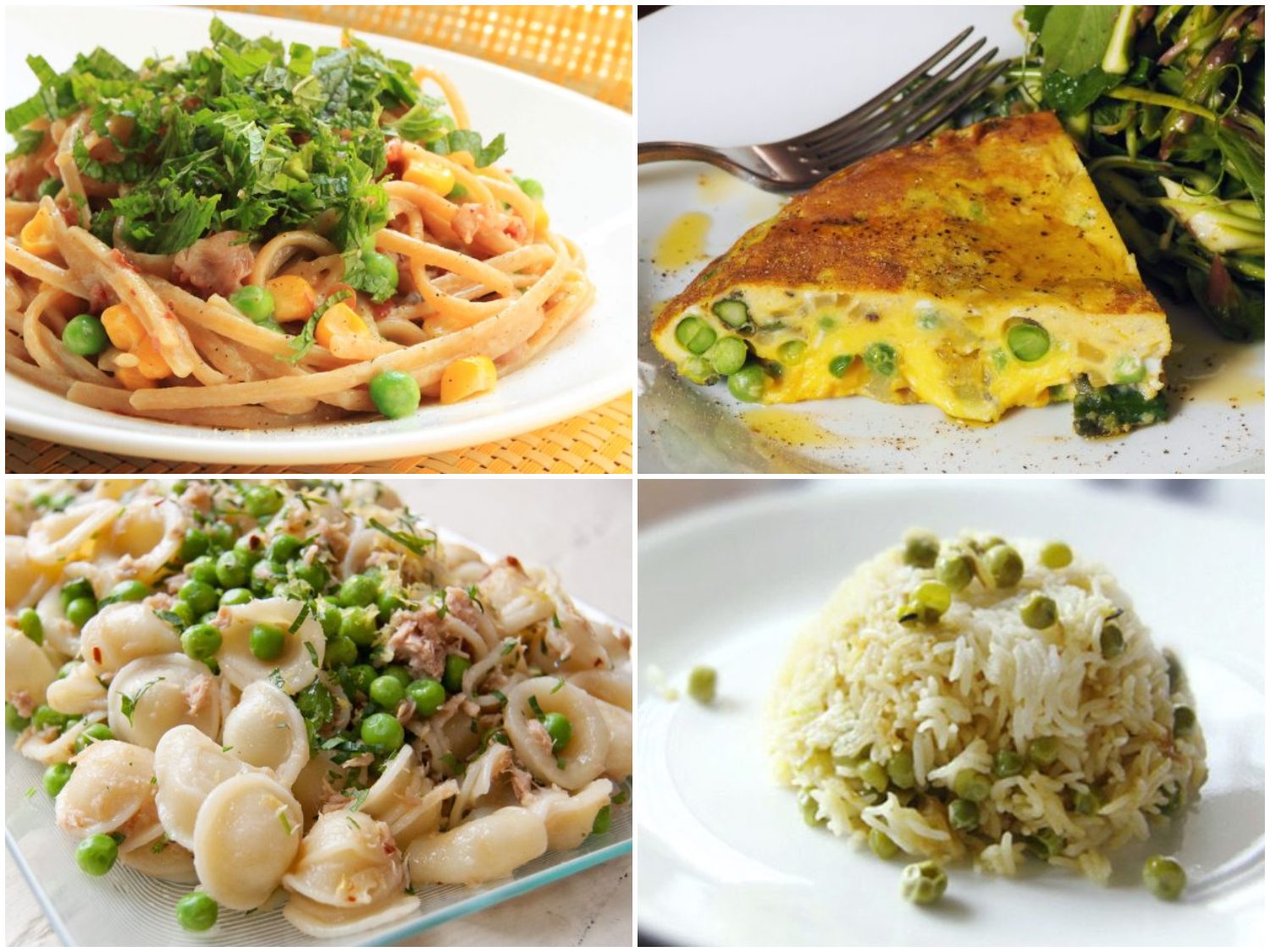
[Collage photographs: Yasmin Fahr, Daniel Gritzer, Lauren Rothman, Denise D’silva Sankhé]
For most of the year, you’re much better off cooking with frozen sweet peas than fresh ones. Peas freeze well, and fresh peas are noticeably less tasty even one day after picking, so I’ll take a flash-frozen sweet pea over one that’s been shipped across the world almost any time.
But, for a brief period in spring, you can find beautiful, bright-green sweet peas (a.k.a. green or English peas) at your local farmers market, which is why you ought to seize on this narrow window to prepare dishes that really highlight the ingredient. Blanching is one of the best ways to preserve the flavor of fresh peas, but there’s plenty more you can do with them. Keep reading for 10 recipes that take full advantage of the season for fresh sweet peas.
Asparagus and Sweet Pea Frittata With Minty Spring Salad
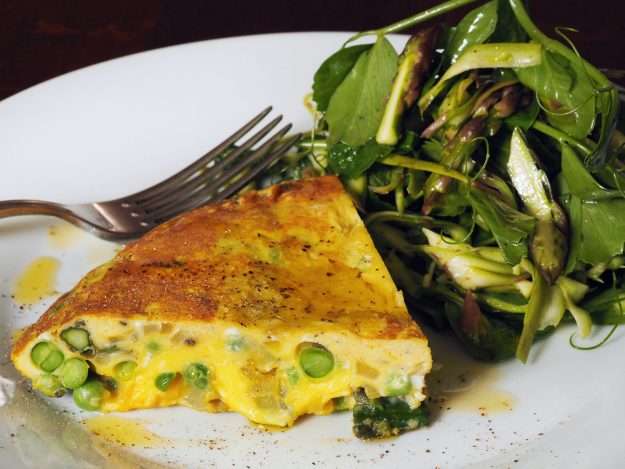
[Photograph: Daniel Gritzer]
Perfect for a Mother’s Day brunch or light dinner, this simple frittata combines sweet peas with grassy chopped asparagus stalks. To make it a full meal, toss together a salad of raw shaved asparagus, pea shoots, and refreshing mint leaves. We chose pea shoots for the salad because they nicely underscore the peas in the frittata, but they can be difficult to find—feel free to substitute other tender greens.
Asparagus and Sweet Pea Frittata With Minty Spring Salad Recipe »
Spring Vegetable Salad With Poached Egg and Crispy Bread Crumbs
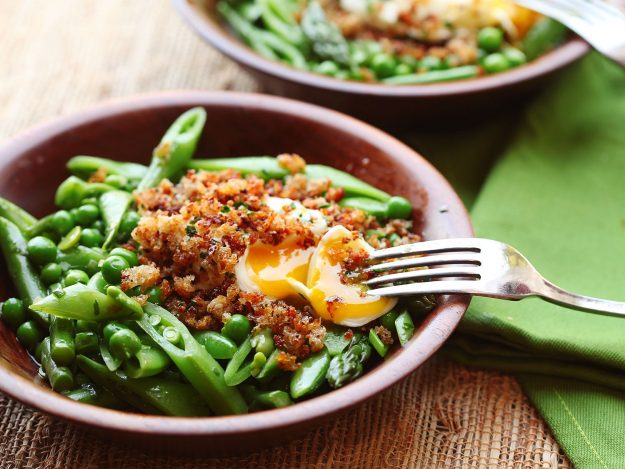
[Photograph: J. Kenji López-Alt]
If you tend to get overexcited at the farmers market this time of year and buy up all the spring produce you can get your hands on, this is a delicious way to use it up. We blanch a whole mess of green vegetables, including sweet peas, favas, snap peas, and asparagus, until they’re crisp-tender, then combine them with a simple lemony vinaigrette. A topping of a soft poached egg and buttery toasted bread crumbs adds richness.
Spring Vegetable Salad With Poached Egg and Crispy Bread Crumbs Recipe »
Warm Farro Salad With Asparagus, Peas, and Feta
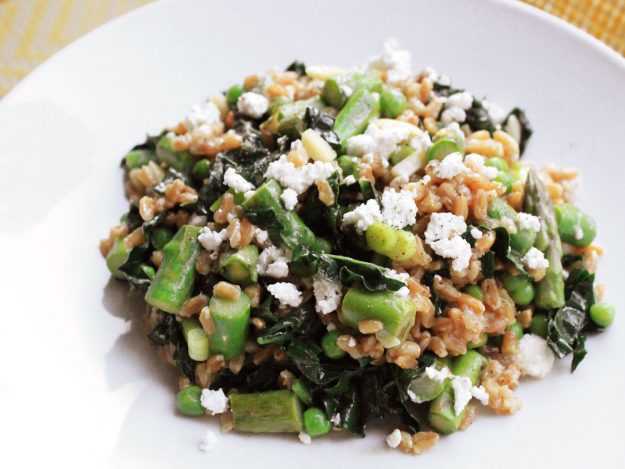
[Photograph: Yasmin Fahr]
Mildly nutty in flavor, with a tender yet substantial texture when cooked, farro is one of my favorite whole grains. For this salad, we add peas and kale to still-warm farro, softening the vegetables just slightly, then toss in a mixture of raw and cooked asparagus. Almonds and feta add crunch and creaminess, and a spicy, pungent Dijon vinaigrette finishes it off.
Warm Farro Salad With Asparagus, Peas, and Feta Recipe »
Basmati Rice and Pea Pilaf (Peas Pulao)
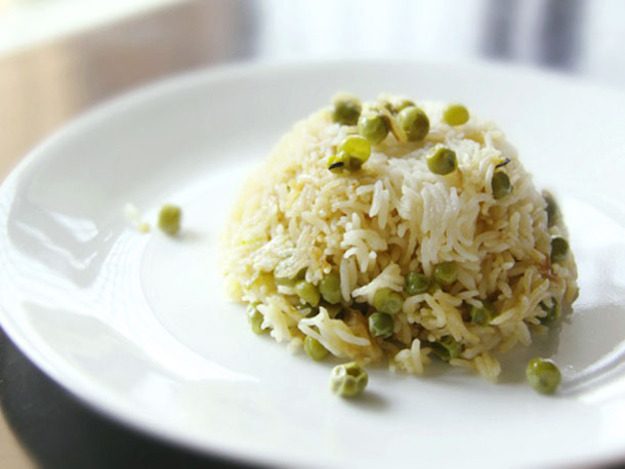
[Photograph: Denise D’silva Sankhé]
This version of rice pilaf, a staple of Indian cooking, is studded with sweet peas to provide little pops of bright flavor. The rice itself is wonderfully aromatic thanks to a variety of spices (cloves, cinnamon, and cumin), plus onions and green chilies. It’s best served with dal or a fresh-tasting cucumber raita.
Basmati Rice and Pea Pilaf (Peas Pulao) Recipe »
Stir-Fried Spring Vegetables With Black Olives and Sichuan Peppercorn
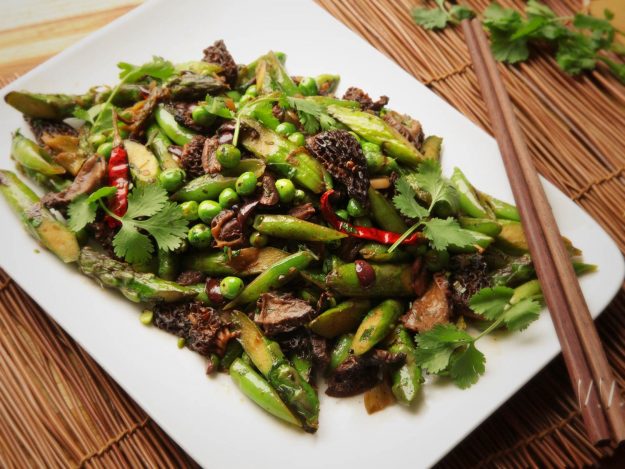
[Photograph: J. Kenji López-Alt]
There’s nothing very Sichuan about spring vegetables like sweet peas, asparagus, and morel mushrooms, but that doesn’t mean you can’t combine them with Chinese techniques and flavors to make a seriously tasty stir-fry. We blanch the vegetables before stir-frying and season them with fiery chilies, Sichuan peppercorns, ginger, Shaoxing wine, and soy sauce. The secret ingredient: black olives, which add surprising little bursts of briny, savory flavor throughout the dish.
Stir-Fried Spring Vegetables With Black Olives and Sichuan Peppercorn Recipe »
Make-Ahead Pea Soup With Shallot, Lemon, and Parmesan
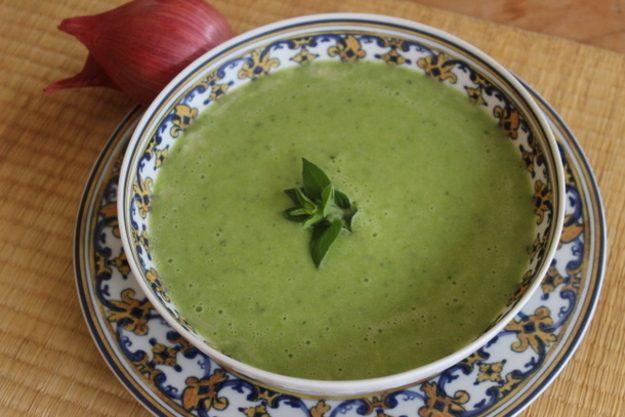
[Photograph: Suzanne Lehrer]
A far cry from the familiar split pea soup, made with dried peas and laden with ham and cream, this lighter take puts the focus squarely on the flavor of fresh peas. We make it with onion, shallot, mint, and lemon rind, blanching the rind multiple times to tame its bitterness while retaining its invigorating citrus flavor. This soup reheats well and is even delicious cold, so make it at the start of the week and take it to work for an easy lunch.
Make-Ahead Pea Soup With Shallot, Lemon, and Parmesan Recipe »
Whole Wheat Linguine With Pancetta, Peas, Corn, and Mint
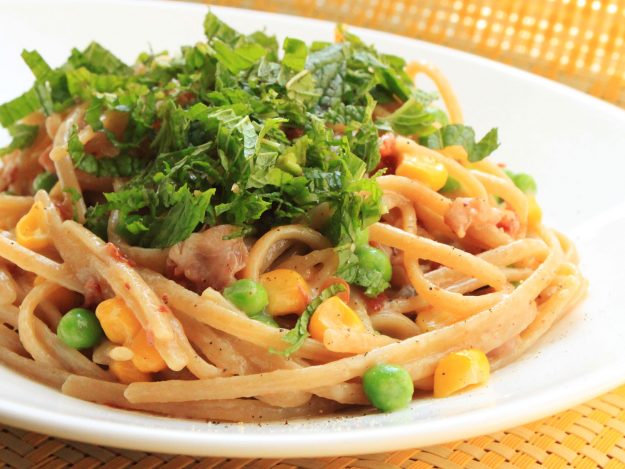
[Photograph: Yasmin Fahr]
This pasta dish combines sweet peas and corn with the saltiness of pancetta, plus aromatic shallots and mint, and it does it all in a single pot. We add the corn and peas at the very end so that they just barely cook, preserving their freshness. Whole wheat pasta is our choice to give the dish extra flavor, but regular linguine is fine, too.
Whole Wheat Linguine With Pancetta, Peas, Corn, and Mint Recipe »
Easy One-Pot, No-Knife, Lighter Tuna Noodle Casserole
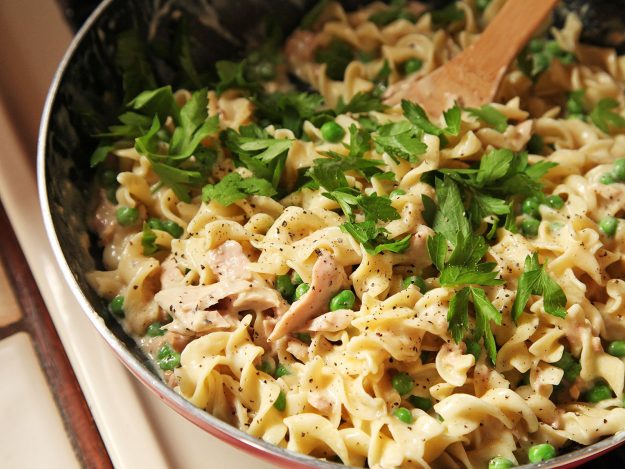
[Photograph: J. Kenji López-Alt]
This is decidedly not the tuna noodle casserole you sat down to as a kid. For one thing, we use crème fraîche and lemon juice, thickened with egg and cornstarch, to make a creamy, lightly tangy sauce that feels an order of magnitude more sophisticated than the canned-soup kind. For another, it requires even less equipment—all you need is a pot, a bowl, a burner, and a fork. The recipe calls for frozen peas, but fresh peas will make it even better, complementing the creaminess of the sauce with their sweet, vegetal flavor. If you want some extra crunch, we recommend a sprinkling of crushed potato chips on the finished product.
Easy One-Pot, No-Knife, Lighter Tuna Noodle Casserole Recipe »
Spicy Orecchiette With Tuna, Peas, and Lemon
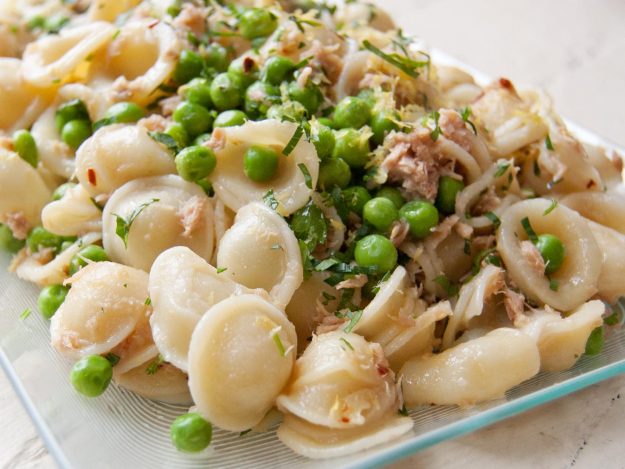
[Photograph: Lauren Rothman]
Much like our tuna noodle casserole, but without the dairy, this one-pot dish combines orecchiette with good-quality canned tuna (oil-packed is best); peas (again, substitute fresh for frozen if you have them); and a healthy dose of lemon zest. We sauce the pasta very simply with a piquant chili- and garlic-infused olive oil. Any chunky pasta shapes will work, but the cuplike form of orecchiette is particularly good for grabbing the tuna and peas.
Spicy Orecchiette With Tuna, Peas, and Lemon Recipe »
Pasta Primavera (Pasta With Spring Vegetables)
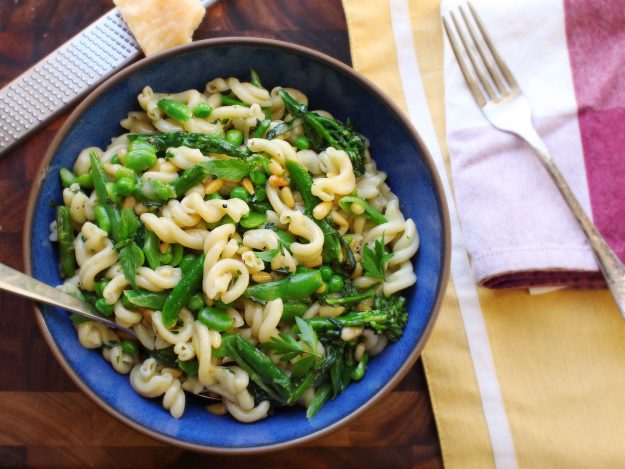
[Photograph: J. Kenji López-Alt]
This version of the ubiquitous Italian-American pasta dish emphasizes the primavera (“spring”) in the name by incorporating a ton of fresh seasonal produce: asparagus, broccolini, fava beans, snap peas, and, of course, fresh English peas. As in the spring vegetable salad recipe above, blanching the vegetables preserves their crispness and color. Using crème fraîche instead of heavy cream lightens up the sauce and adds a tanginess that complements the green ingredients.
Pasta Primavera (Pasta With Spring Vegetables) Recipe »
This post may contain links to Amazon or other partners; your purchases via these links can benefit Serious Eats. Read more about our affiliate linking policy.
Source link